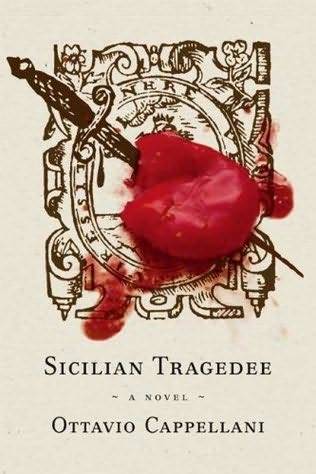Postmodern Mafiosi
LatentStyleCount="267">
Movies are the source for forms of expression…Camorristi look to the movies to create for themselves a criminal image they often lack. They model themselves on familiar Hollywood masks, a sort of shortcut to make themselves into figures to fear.
-- Roberto Saviano, Gomorrah
In the chapter of Gomorrah titled “Hollywood,” Roberto Saviano describes how Italian American gangster narrative has influenced the behavior and self-image of Italian mafiosi and camorristi. One high-ranking camorrista, Walter Schiavone, brother of the notorious boss Francesco “Sandokan” Schiavone, built a villa modeled on the ostentatious digs inhabited by Tony Montana, the Cuban mobster played by Al Pacino in Brian De Palma’s “Scarface.”
In director Matteo Garrone’s film adaptation of Saviano’s extraordinary book, two teenage gangster wannabes act out their “Scarface” fantasies, even quoting the famous line, “The world is yours.” But their anarchic impulsiveness is bad for business, and the local bosses put a stop to their antics. The boys’ infatuation with Hollywood gangsterism predictably culminates in their violent deaths, not in a gaudy Miami mansion but on an ugly, isolated strip of the Campania coastline.
If American films have influenced Italian criminals, they now also inform Italian literary treatments of organized crime. There’s no more vivid example of this phenomenon than the novels of Sicilian author Ottavio Cappellani.
Cappellani draws from the wells of Coppola, Scorsese, and De Palma. But his main inspiration would seem to be Quentin Tarantino. In Cappellani’s novels, the Tarantino influence is unmistakable: there’s the extravagant if cartoonish bloodshed, the black humor and hipster irony, the shallow characterizations verging on caricature. The moral perspective is similarly attenuated, and sometimes nonexistent.
Neither of Cappellani’s two novels, “Chi è Lou Sciortino?” (Who is Lou Sciortino?) and “Sicilian Tragedee,” is an outstanding literary work. (Both have been published in the United States by Farrar, Straus, Giroux, and both have been well translated, respectively by Howard Curtis and Frederika Randall.) Yet they’ve received generally favorable reviews outside Italy. The American novelist David Leavitt, for example, in his New York Times review of “Sicilian Tragedee,” hailed the book as “irreverent and very funny,” comparing it to director Pietro Germi’s 1960s satire of Sicilian mores, “Divorce Italian Style.”
That’s a comparison it definitely doesn’t deserve.
The novel, which is set in Catania, Sicily’s second city, has a clever and initially promising premise. Tino Cagnotto, a gay, middle-aged director of avant garde theatrical productions, feels creatively burnt-out until he falls in love with Bobo, a sullen young sales clerk. Tino’s passion for Bobo reinvigorates his creativity, inspiring the director to conceive a production of “Romeo and Juliet” in the style of Sicilian dialect theater, with two sixty-ish veterans of that traditional art, Cosentino and Caporeale, as Romeo and Mercutio. Rosanna Lambertini, a local actress who is described as resembling Paris Hilton’s mother, plays Juliet.
In Tino’s take on the tragedy of star-crossed young lovers, the bawdy subtext of Shakespeare’s dialogue becomes text, and Tino also introduces some rude bits of stage business, most notably the oversized codpiece worn by the production’s Romeo.
As Tino struggles to mount his show, an ambitious local mafioso, Alfio Turrisi, is starring in and directing his own version of “Romeo and Juliet,” as he pursues Betty, the spoiled daughter of Turi Pirotta, a rival gangster. The two plotlines converge, of course, and along the way we encounter philistine and feuding cultural commissioners, decadent Sicilian aristocrats (is there any other kind?), and old-school Palermo mafiosi. When Tino’s “Romeo and Juliet” finally makes it to the stage, several members of the audience expire long before the title characters meet their ends.
“Sicilian Tragedee” is an improvement over “Chi è Lou Sciortino?.” Cappellani’s debut is thin and insubstantial, jokey and often downright silly. Its plot is a confused mess, with Sicilian and New York gangsters cracking wise and slaughtering each other for no compelling reason. Despite some amusing moments, it’s eminently forgettable. But it is Tarantino-esque, if that’s what you’re looking for in a novel.
Cappellani’s follow-up has more substance but it suffers from some of the same defects as its predecessor. “Sicilian Tragedee” centers on a theatrical production, but the novel itself, in structure and style, has more in common with a screenplay, with short scenes written in the present tense, shifting points of view, and narration that reads more like direction. The limitations of this approach are especially evident in Cappellani’s description of Tino Cagnotto’s “Romeo and Juliet,” where he gives us not fully realized prose but…a script.
Although I found “Sicilian Tragedee” unsatisfying overall, it has its moments, mostly in its depictions of contemporary Catania, a city I know pretty well. Cappellani captures Catania’s particular and peculiar mix of the traditional and the au courant, its decadence and its vitality. His satirical skewering of Catania’s elites, whether mafioso, governmental, or aristocratic, can be wickedly entertaining. Cappellani also portrays aspects of Sicily that rarely appear in fiction, including Catania’s gay life. Besides Tino and his Bobo, there’s Carmine, the often exasperated best pal of Betty Pirotta, the Will to her graceless Grace. As the mafia princess says to a friend, “It’s cool to have a gay guy as a lady’s companion, they have them in America, don’t you watch the sitcoms?”
Cappellani at one point mentions the condoms distributed “at the Pegaso,” the Catania gay center whose dances and parties I’ve enjoyed with local friends. The Pegaso even has its own “lido,” or section of the town beach, during the summer.
The depictions of Catania’s young mafiosi ring true as well. These malviventi don’t wear coppolas or wield the lupara shotgun; nor do they act with the self-conscious gravity and reserve of old-school gangsters. They wear flashy, expensive suits, constantly chatter on cell phones, do drugs, and have skinny, chic blonde girlfriends. One night, my partner Rob and I and two friends had dinner at a Catania restaurant popular with these nuovi picciotti. They, with their long hair practically dripping with “product,” cell phones at the ready and blonde babes at their sides, could’ve stepped right out of the pages of Cappellani’s novels.
Perhaps the generally favorable critical reception in the U.S. (and elsewhere) to Cappellani’s work can be explained by the fact that the author provides what we’ve come to expect of Sicilian stories – the exotica of criminal conspiracies, murder, “passione,” etc. -- but he gives these familiar tropes a postmodern spin, inflecting them with his sardonic sensibility and elements drawn from American gangster movies and pulp fiction.
Like so much contemporary pop culture, Cappellani’s po-mo mafia satires can be diverting. But they also don’t leave much of an impression.





































i-Italy
Facebook
Google+
This work may not be reproduced, in whole or in part, without prior written permission.
Questo lavoro non può essere riprodotto, in tutto o in parte, senza permesso scritto.